The Alocasia maharani is the most understated member of the Alocasia family.
With a leathery texture, green-grey tones, and perfectly teardrop-shaped leaves, it looks brilliant anywhere in the home and adds depth to any terrarium build.
It’s a timeless classic, not a gaudy trend.
But, as many plant parents know, Alocasia can be tricky. In this article, I’ll let you in on every trick in the book to keep the mysterious maharani happy.
Let’s go, plant lovers!
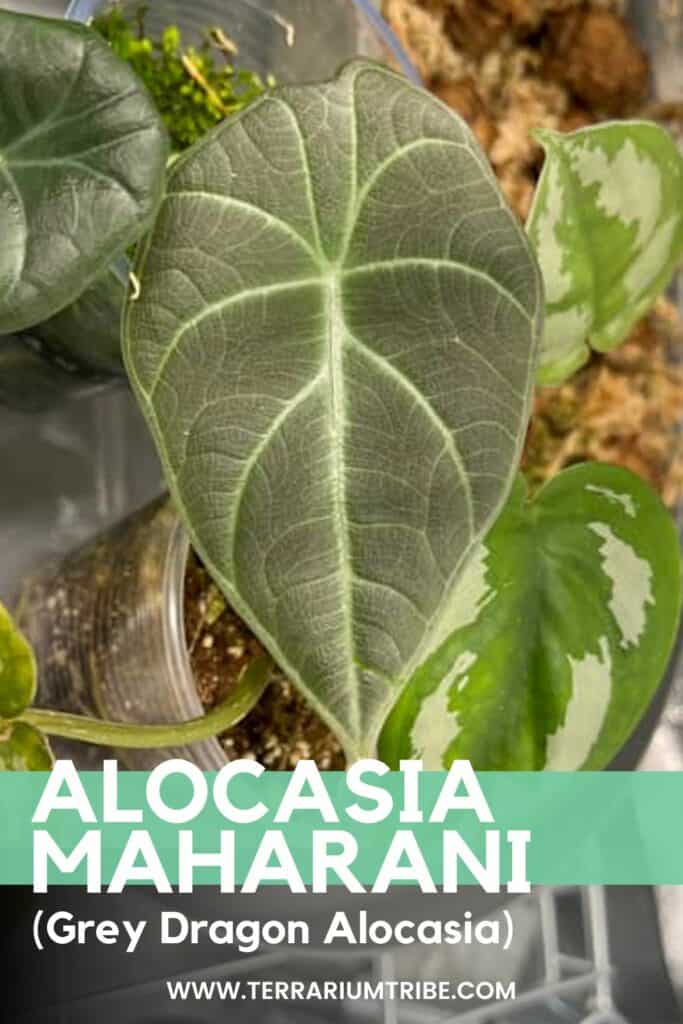
Alocasia maharani: A Stunning Hybrid!
While the name maharani – translating to “princess” in Hindi – may hint at Indian heritage, this plant is actually a modern hybrid.
With Alocasia melo and Alocasia regulina (aka Alocasia Black Velvet) as the proud parents, it’s clear where the maharani gets its dashing looks.
It has the melo to thank for its texture – and “Grey Dragon” nickname – with fabulous dragon scale-like markings and ridges that feel leathery to the touch.
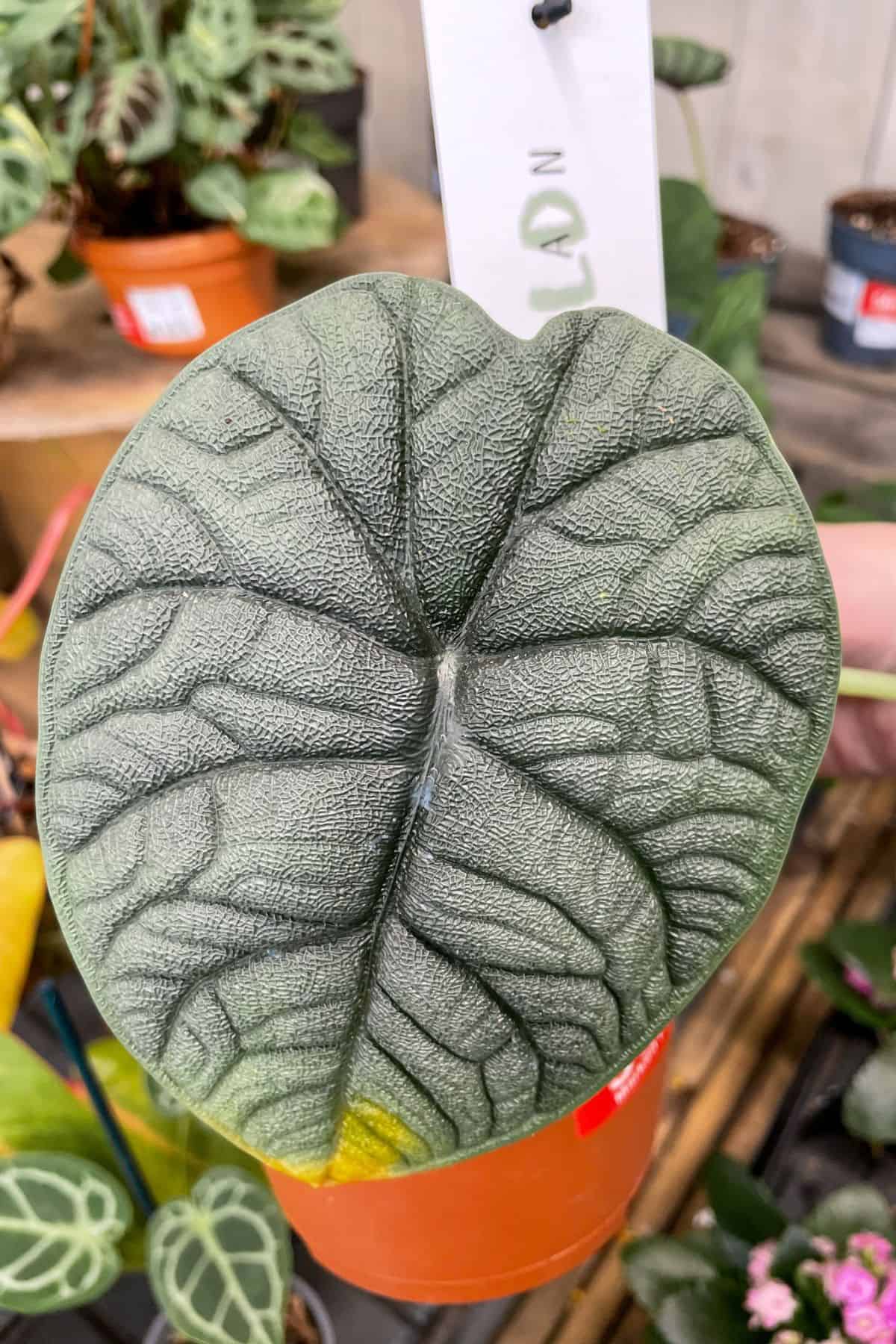
And from its regulina parent, the maharani has inherited the iconic silvery white veins (though they can often be quite muted).
As a Jewel Alocasia, this beautiful plant will stay compact as it matures, making it perfect for filling that space on your shelf or livening up your latest terrarium build.
Where to Find the Alocasia maharani for Sale
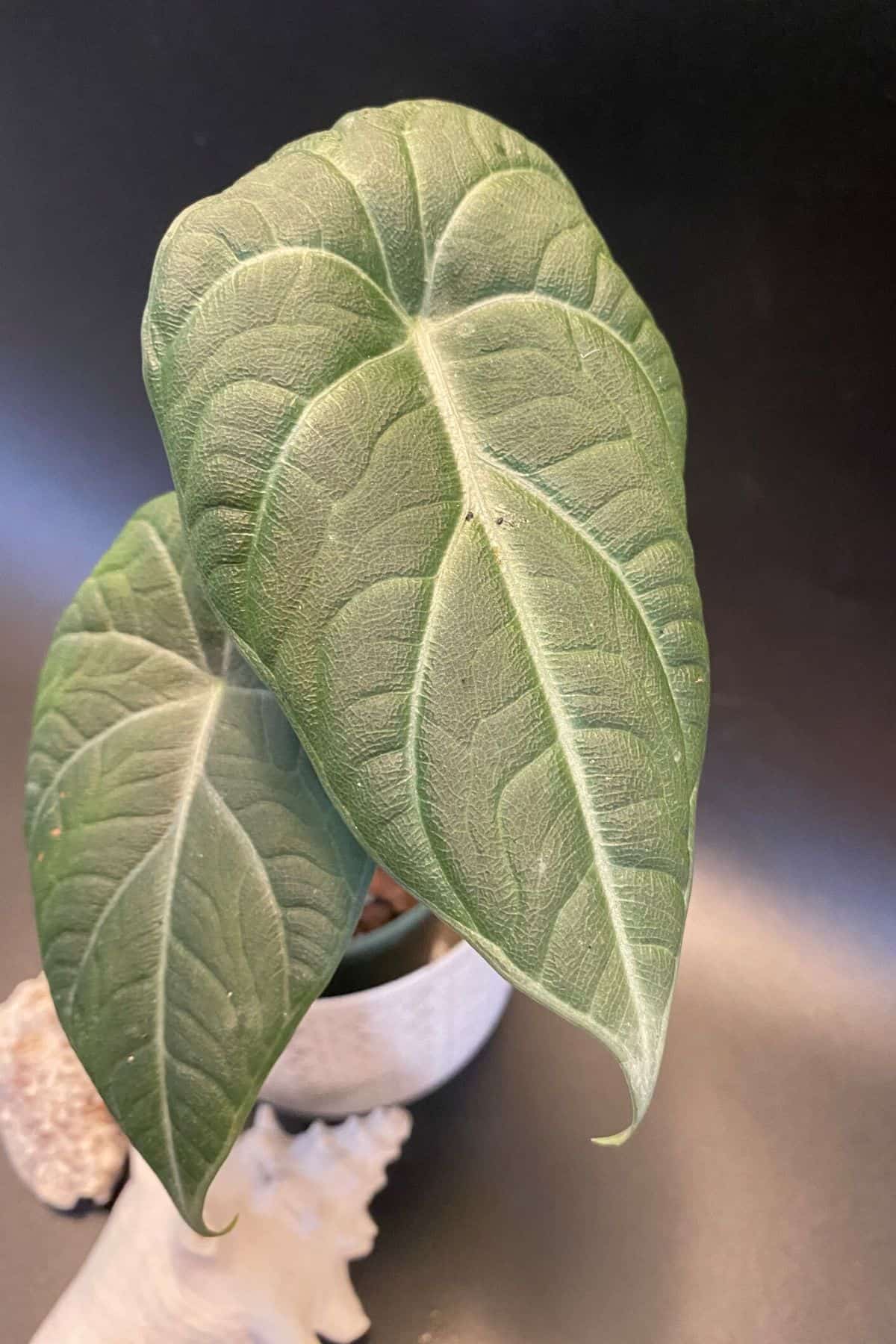
See the links below to purchase from reputable terrarium plant shops and marketplaces (may include affiliate links).
Alocasia maharani Care & Growth
At a Glance
| Plant Type | Foliage |
| Lighting | Bright indirect light |
| Temperature | 65-80°F (18-26.5°C) |
| Watering | Moderate, even moisture |
| Humidity | Moderate-high humidity (40-80%) |
| Growth | 10-15 inches |
Lighting
Despite its hardy leaves, the Alocasia maharani isn’t a fan of prolonged exposure to direct light. Too much sun and it can easily burn, resulting in unsightly brown and yellow tips and spots.
Instead, like most tropical aroid species, it prefers bright, indirect light.
For those in the Northern Hemisphere, here are your options:
- A North-facing windowsill is best; it will only ever receive indirect light.
- An East-facing windowsill is the next best thing (it will receive a little gentle, direct sunlight in the morning, but nothing too harsh).
- If you only have South-facing or West-facing windows, keep your plant or terrarium a few feet away from the window or introduce a screen to provide shade.
Watering
Alocasia may have a reputation for being quite fussy, but watering is easy when you remember two slightly counter-intuitive points.
- Being sat in waterlogged soil will result in root rot.
- Despite point 1, they are a moisture-loving genus (aren’t we all?).
So how do we balance this? Drainage, drainage, drainage.
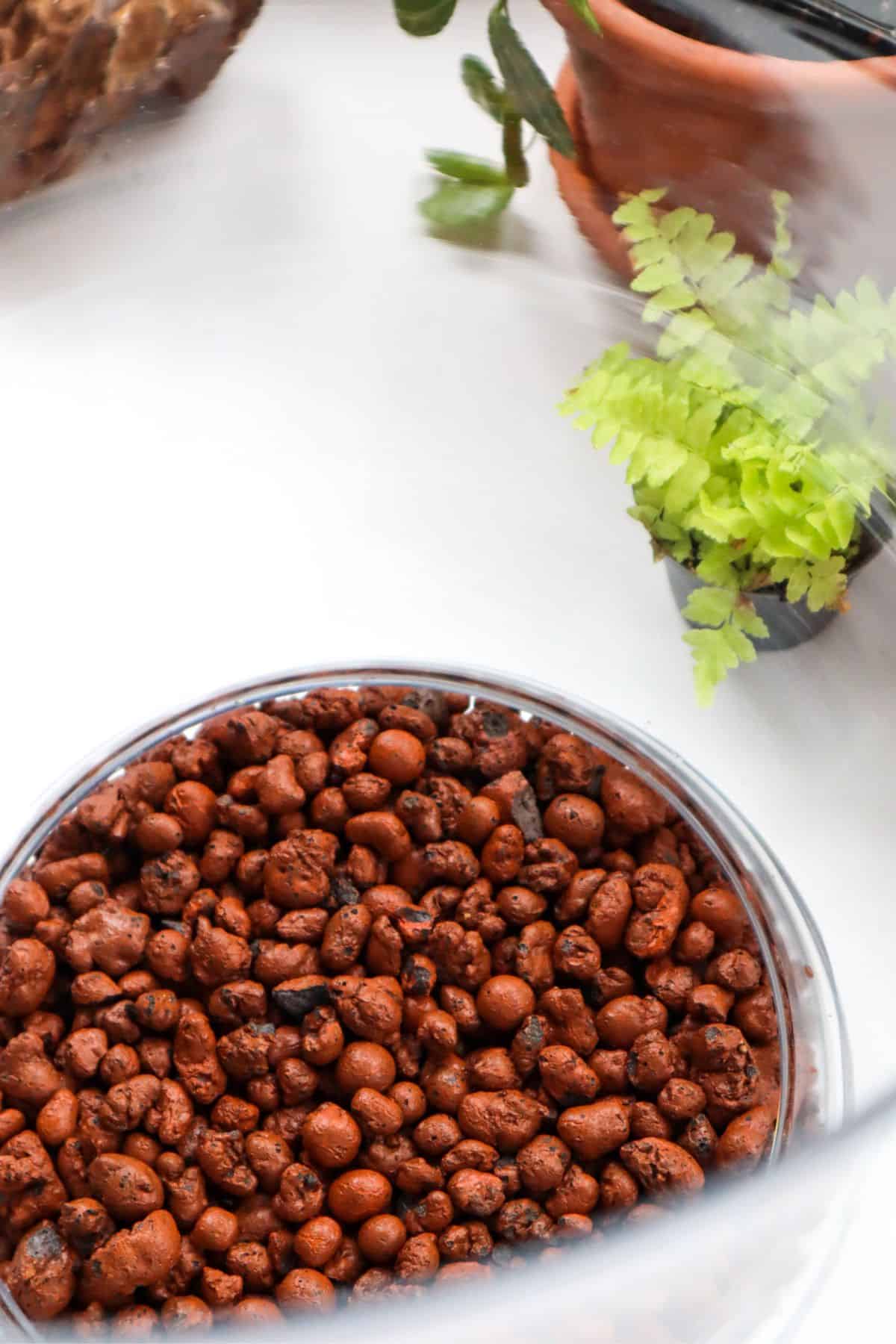
If you’re keeping your Grey Dragon as a houseplant, make sure it has a pot with drainage holes. If you’re popping yours in a terrarium build, use an inch or so of gravel to create a drainage layer. These solutions will give any excess water somewhere to escape so it doesn’t pool around your plant’s roots.
As a houseplant, water whenever the top soil feels a little dry to the touch (usually every 4-6 days or so, but it could be more or less depending on the season), and tip away any excess water in the tray.
In a terrarium, the aim is to be very much hands-off on the watering front, but getting the balance right can take a while. It’s much easier to add water than it is to remove it, so I recommend starting with just a few sprays; you can always add more later.
Soil / Substrate
Unsurprisingly, the maharani is going to appreciate a well-draining soil mix.
A light, airy soil mix with plenty of chunky supplements to help aeration and drainage (orchid bark, tree fern fiber, pumice, etc.) is perfect. Go easy on the coco coir and sphagnum moss, as they retain a lot of moisture.
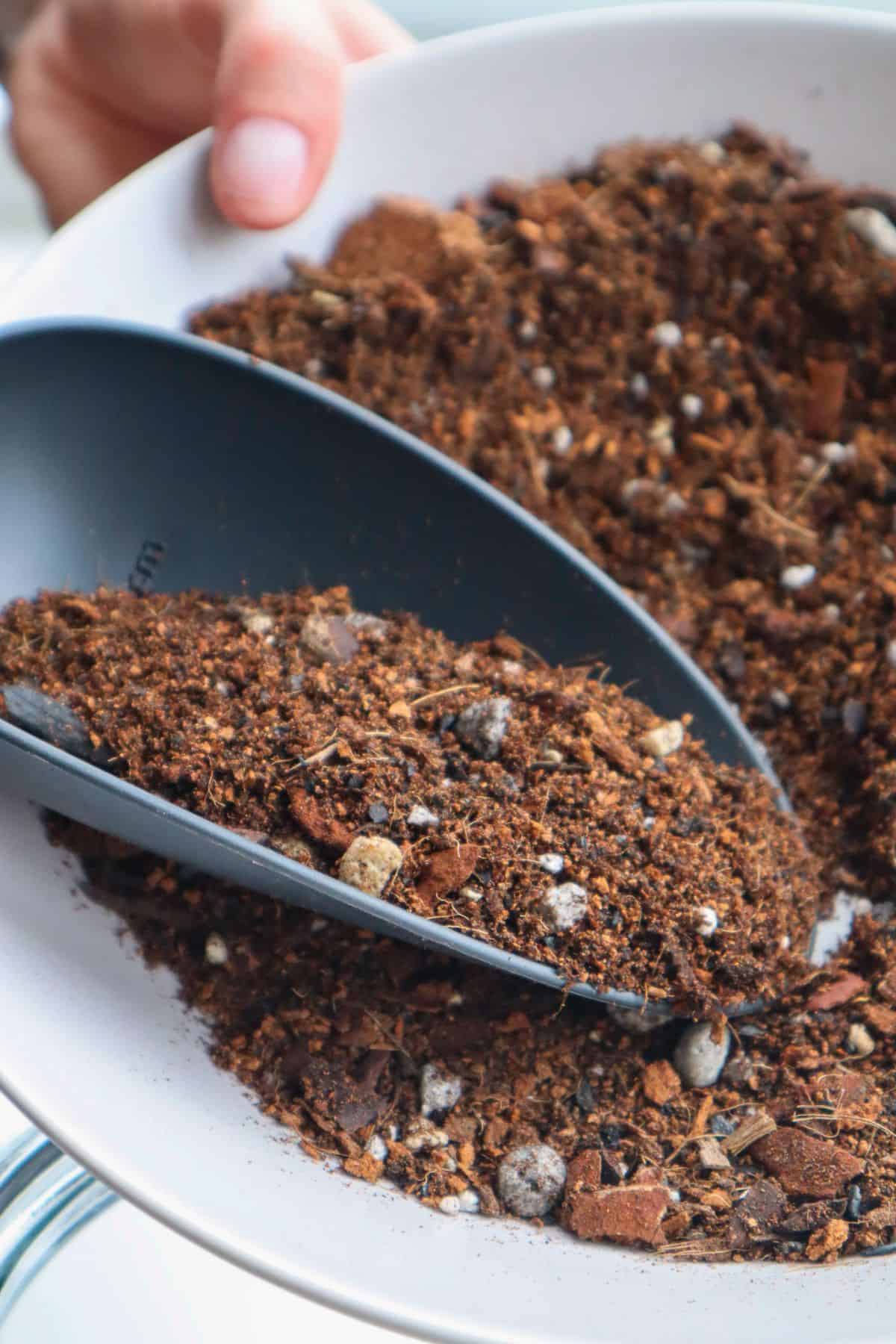
And be sure to stay clear of regular potting soil; it compacts too quickly and doesn’t drain well enough.
Another thing to note about this plant is that it enjoys having “tight feet.” This means it likes to be somewhat rootbound, so don’t hesitate to house it in a smaller pot or squeeze it into a busy terrarium.
Temperature & Humidity
Though the maharani is a hybrid and not found in the wild, we can look to the parent plants for clues to keep it happy.
Alocasia regulina and Alocasia melo are found on rainforest floors in Southcentral and Southeast Asia.
Southeast Asia is hot and humid. That is exactly what this plant enjoys.
Humidity levels over 50% will keep this plant happy, and average household temperatures around 65-80°F (18-26.5°C) will be perfect.
The maharani can easily tolerate hotter conditions; you’re more likely to run into issues if your home is too cold. If it drops below 60°F (15.5°C) for an extended period, the plant could enter dormancy.
Naturally, a terrarium gets around all of these issues; there’s no easier way to maintain warm temperatures and high humidity year-round!
Growth (and Blooms?)
Unlike many other tropical plants that spit out stems through nodes, the maharani leaves grow from within the existing stems, one new leaf at a time.
As they break free from the stem, they unfurl majestically.
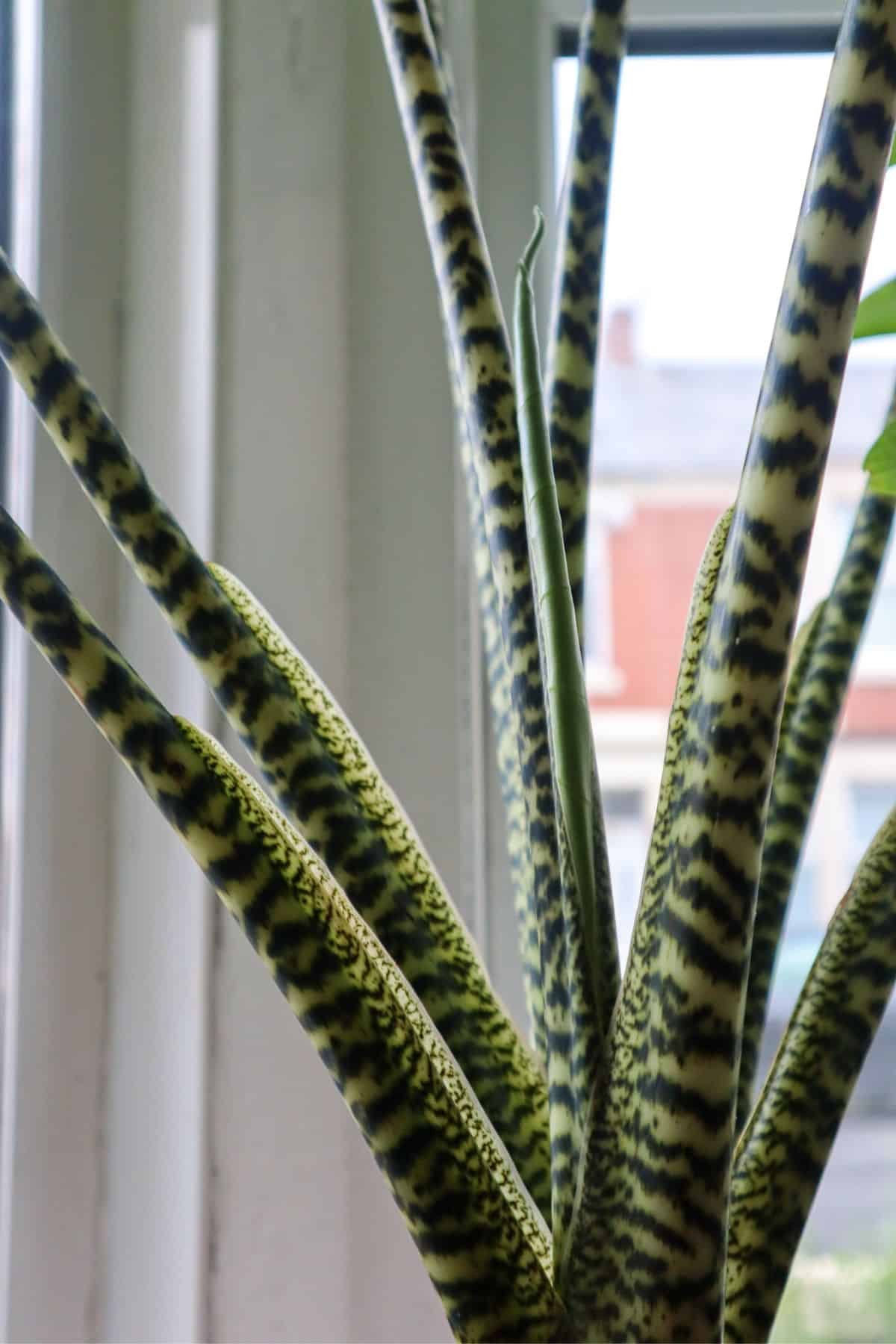
As Alocasia grow, they often sacrifice their older leaves for new growth.
Sounds dramatic, right?
So, while yellow leaves can be a sign of overwatering, underwatering, too much light, or too little humidity, they can also be completely normal.
A good rule of thumb is that if your plant is pushing out a new leaf, the oldest leaf turning yellow isn’t a problem.
And now for the question on everyone’s lips: does it flower?
Yes, Alocasia maharani does flower, but the flowers are relatively dull, and the plant needs to be extremely happy to bloom.
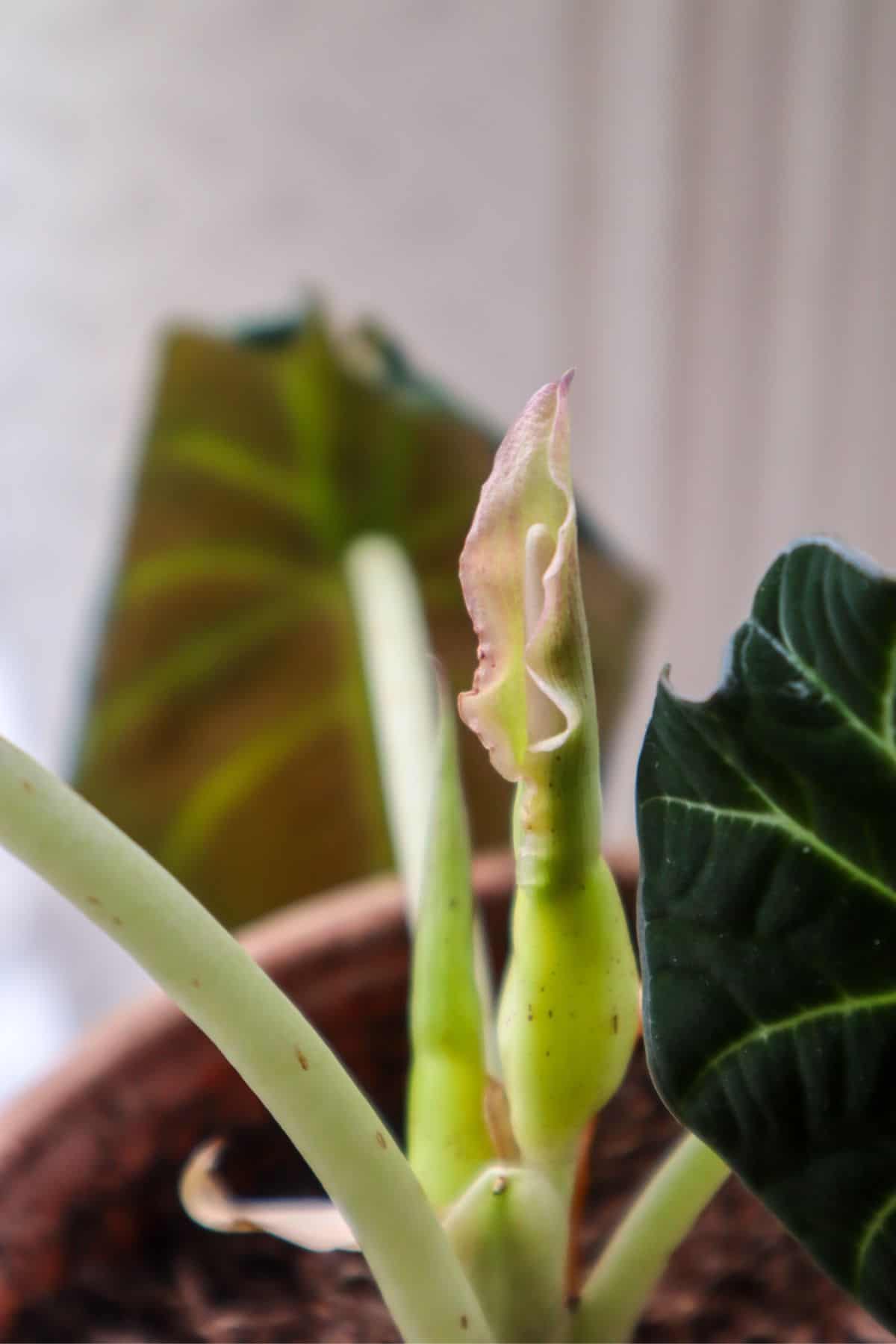
How to Propagate Alocasia maharani
To propagate your Grey Dragon, all you need is patience.
Alocasia have tuberous root structures, so they can’t be propagated via stem cuttings.
They reproduce through bulb-like structures called corms that each develop into a new plant.
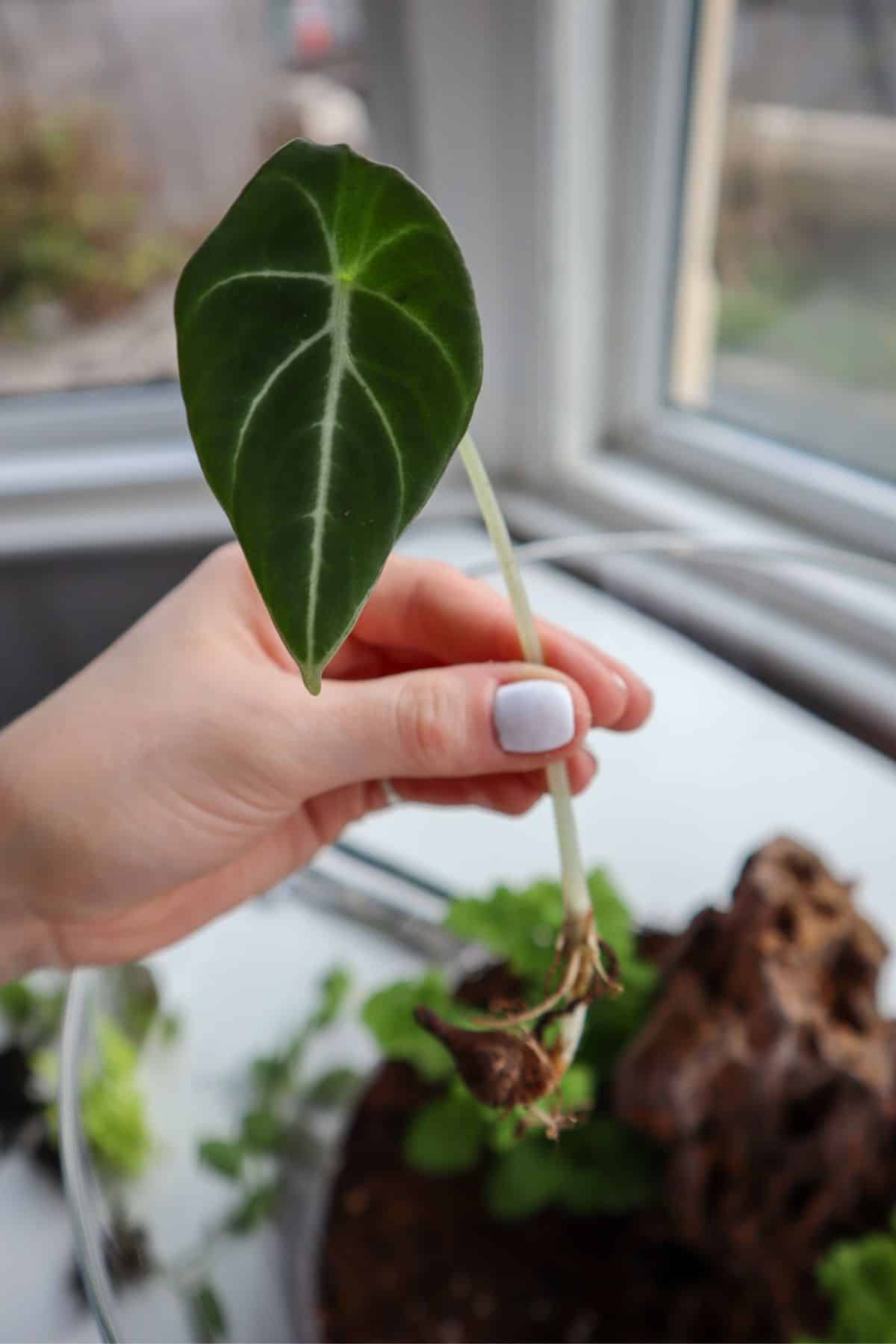
If your mother plant is happy, around once a year, you will see new offshoots (adorably called “pups”) peek out of the soil around the base of your plant.
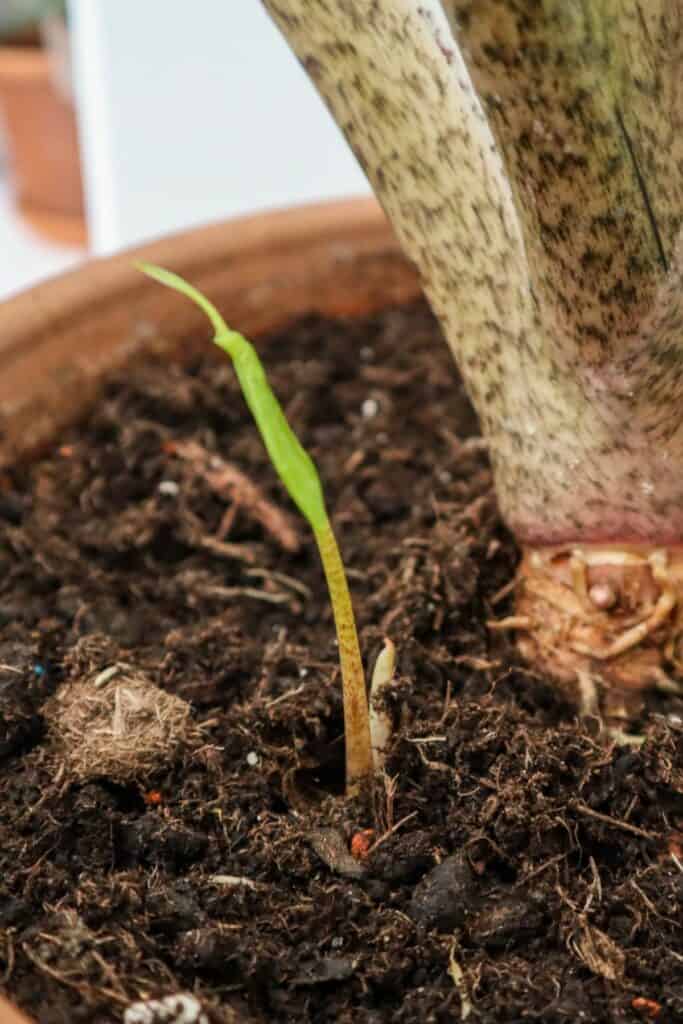
At that point, the new plant can be easily separated, and you’re almost certainly going to find more corms beneath the soil.
As if you’re repotting the plant, remove it from the pot and gently remove the soil from its roots. The new plant should come away without much trouble, but you can gently snip it away if the roots are tangled.
Any more corms that are ready will easily fall off, and any still attached to the rhizome (that don’t come away) are not ready and should be left.
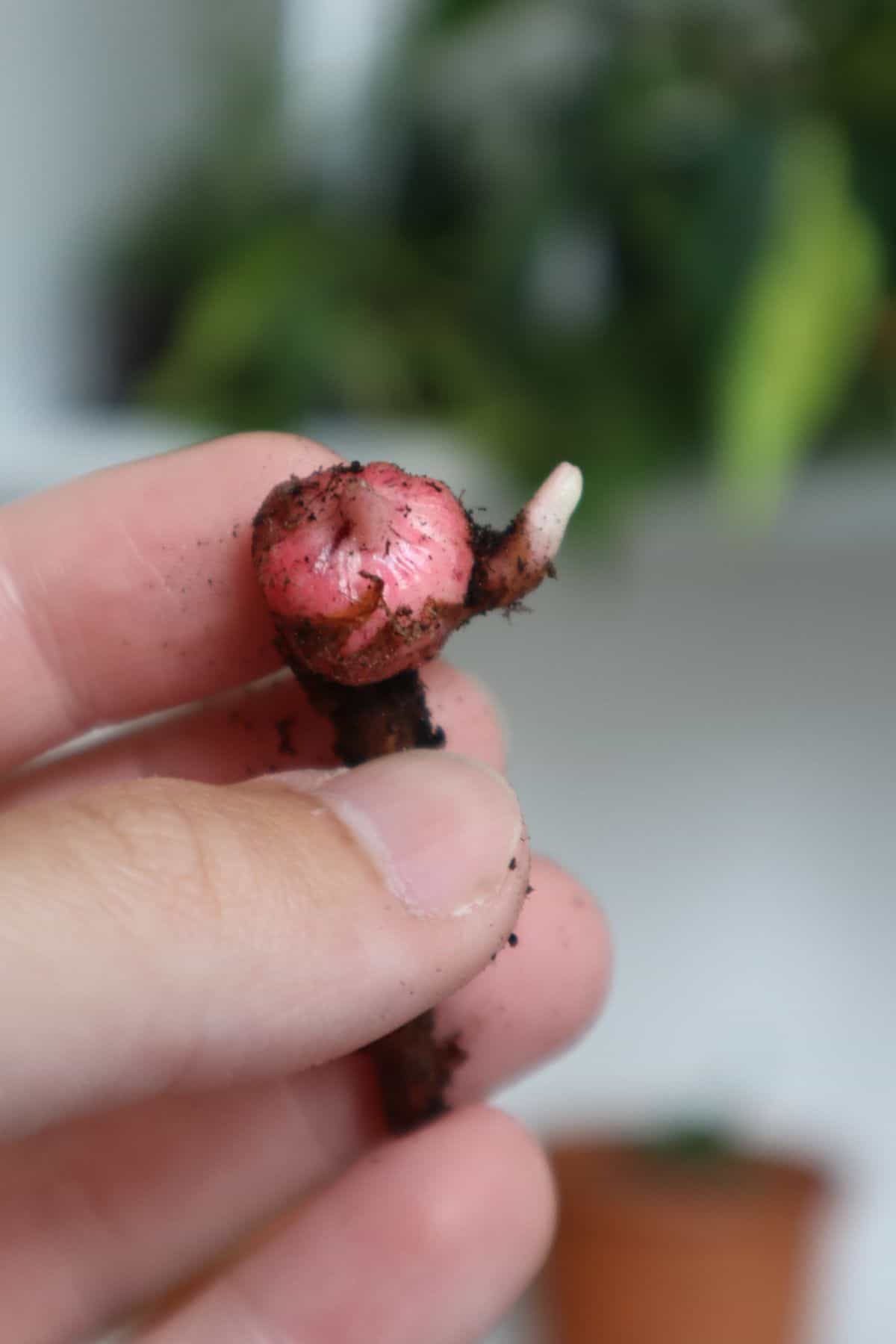
Then simply plant them, keep the soil moist, and wait for the magic to happen.
Varieties & Similar
If you’re a fan of the Grey Dragon, you’re in luck; there’s plenty more where that came from.
The Jewel Alocasia family is vast and ever-expanding, with all of the textures, colors, shapes, and variegations your heart could desire.
Helpfully, we’ve stuck them into a Jewel Alocasia roundup for you to peruse at your leisure. We even have a deep-dive plant profile on Alocasia Black Velvet (regulina) if you like.
Or, if you’re tempted to dip your toe into the world of giant indoor plants, the Alocasia genus is the place to be.
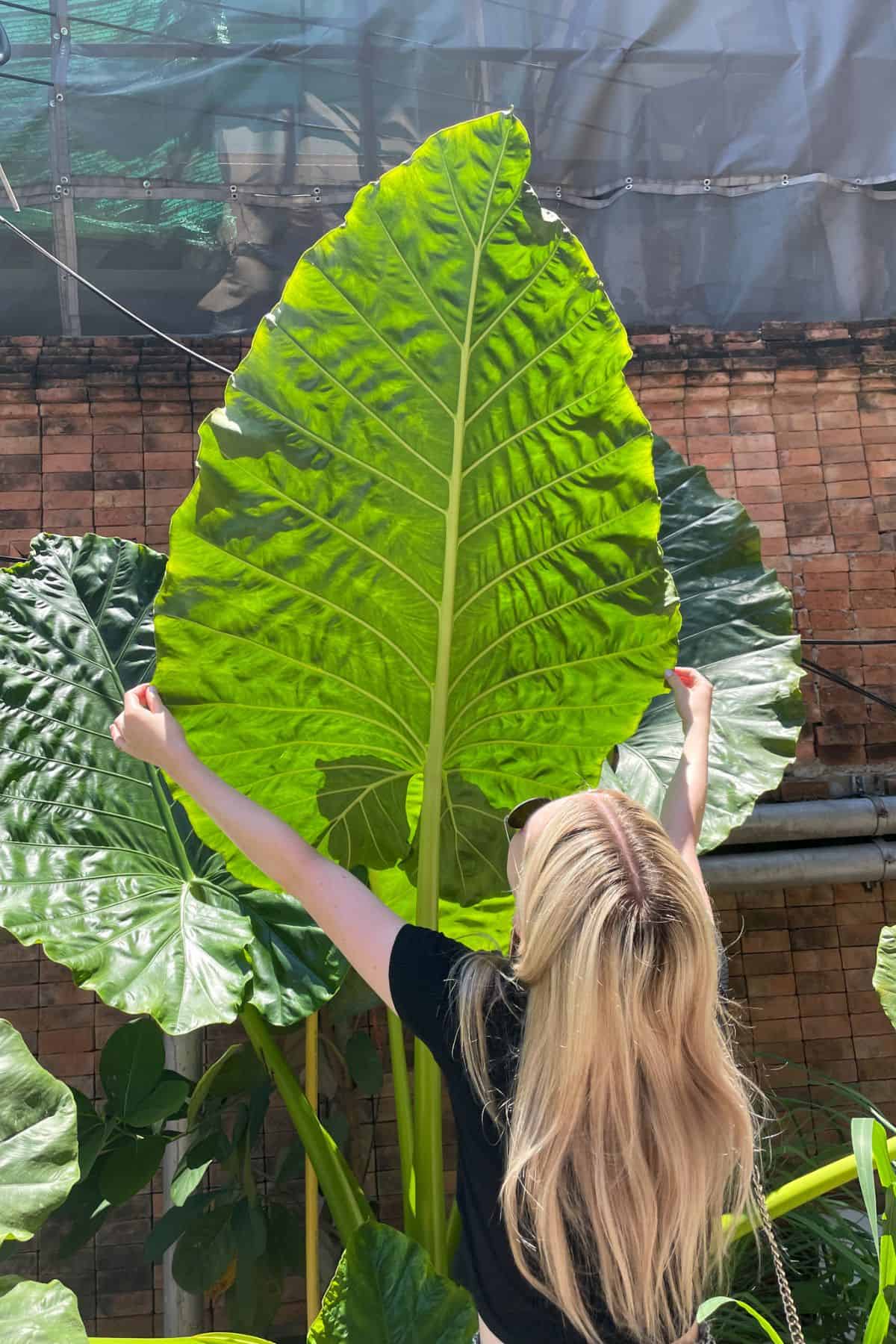
Alocasia zebrina and Alocasia ‘Stingray’ are beautiful species to get started with.
Alocasia maharani FAQ’s
While Alocasia maharani was considered rare for some time, it’s now widely available and becoming cheaper to purchase.
Alocasia maharani is a member of the poisonous Araceae (Aroid) family and is toxic when consumed by people and pets.
Both Alocasia melo and maharani have green-grey textured thick leaves. The venation on the melo is dark, and the venation on the maharani is silvery-white.
Both the Black Velvet Alocasia and the maharani have silver venation. The Black Velvet has black, velvety leaves, and the maharani has green-grey textured leaves.
